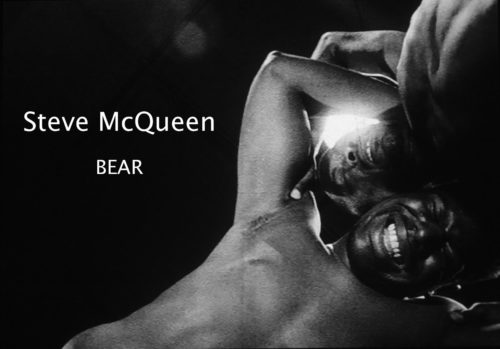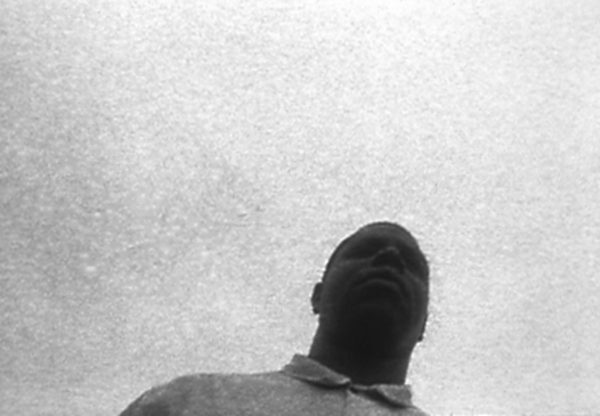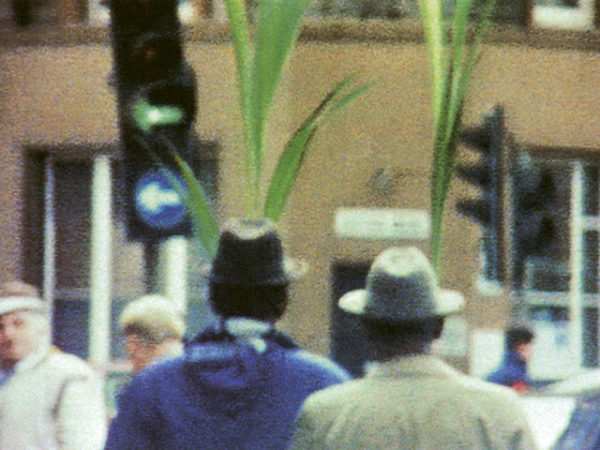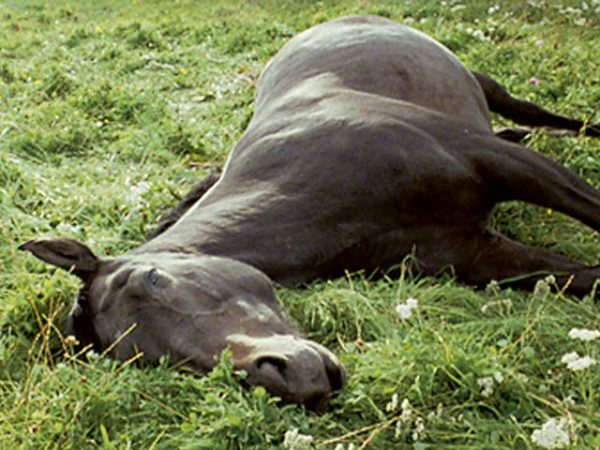The Short Films of Steve McQueen
Steve McQueen is a British film director and screenwriter. He won an Academy Award for his feature film 12 Years A Slave. Made in 2013, the film is a historical drama adaptation of an 1853 slave narrative memoir. If you haven’t seen it, I recommend it.
However, my personal favourite of McQueen’s feature films is Hunger, a 2008 historical drama starring Michael Fassbender, Liam Cunningham, and Liam McMahon, about the 1981 Irish hunger strike. The film is very unusual in that it has very little dialogue, except for an unbroken 17 minute conversation in the middle of the film.
The film is visually beautiful, shocking and at the same time heartbreaking.
Steve McQueen
After he left Goldsmiths and studied briefly at Tisch School of the Arts in the United States, he found the approach there too stifling and insufficiently experimental. He complained that “they wouldn’t let you throw the camera up in the air”.
With a smartphone in our pockets, no art or film school is going to stop us now!
What’s also interesting though is that Steve McQueen took an art school route through university, rather than a dedicated film school. He started filmmaking in 1993 and made a number of films in the short form which were themselves successful in their own right. Then eventually made that first feature in 2008.
In other words, he spent 15 years making short films.
For those of us eager to get our first feature on the board, this might be a good reminder of the value of really investing time into short form filmmaking. So let’s look at those shorts and see how they developed.
Bear (1993)
Bear shows a wrestling match between two men who alternate ambiguous relations and gestures of aggression and erotic attraction. The roles are played by Vernon Douglas and Steve McQueen himself. For many it raised questions about race, sexual attraction to men, and violence. But McQueen says issues of race do not take priority in his work. The film was shot in black and white on 16mm.

Five Easy Pieces (1995)
Nothing to do with the Jack Nicholson movie of the same name, Five Easy Pieces simply follows a woman as she crosses a tightrope.
Andy Dancer says about the film: “Marked by spatial, temporal, and narrative disjointedness and ambiguity, the work’s movements cohere into an orchestrated meditation on film itself.”
McQueen himself says he finds a tightrope walker to be “the perfect image of a combination of vulnerability and strength.”
To me the short shows well composed images that combine to give a sense of how it feels to walk a tightrope. The shots get close to the action. A lot of the short is composed of a angle up showing the soles of the tightrope walker’s feet. There’s not one single wide shot of the walker in the whole film.
You can watch the whole film on CriticalCommons.org.
Just Above my Head (1996)
Another film about walking, Just Above my Head takes its title from the work of the same name by the American writer James Baldwin. The film shows the artist (McQueen) as he walks beneath a big white sky. The framing shows only his head coming in and out of frame, varying due to his pace in relation to the movement of the camera.

Looking at that frame above, do you think this particular Oscar winning director was worrying about film grain or the technical aspects of filmmaking? No, it’s the visual ideas which are far more important.
Deadpan (1997)
Remember that Buster Keaton moment where the house falls on him but he somehow miraculously survives because he’s in the perfect position? McQueen’s Deadpan is a reenactment of those stunts.
Here’s the original.
A description of McQueen’s version:
“Steven McQueen restages the “self-conscious exhibitionism” of early silent cinema in Deadpan by isolating and repeating in a continuous loop, a moment from an American silent film of the 1920s. Playing the central character, he reenacts a shot in a Buster Keaton comedy, Steamboat Bill Jr., in which Keaton stands immobile as four walls of a house come crashing down around him, then emerges unscathed. McQueen reverses this process. The loop, replaying the same moment, shot from different angles, repeatedly for four minutes, refuses the forward movement of narrative continuity and exposes the discontinuous fragmentation of reality. The speed at which the frame house collapses around McQueen increases toward the end of the film, suggesting a dramatic climax that is never realized”.
You can see a (poor quality) clip of McQueen’s version on vimeo here.
Exodus (1997)
Exodus takes the title of a record by Bob Marley as its starting point. In the film, two elegantly dressed, cosmopolitan men carry two palm trees through a crowd in a London street. The quote from Marley’s narrative of dislocation and return to the promised land, seen in the context of the immigration of West Indians immigrants, becomes humorous and ironic.

Again, the short contains a very simple visual idea to communicate a “story” which is very much open to interpretation. The artistry of film and drama involves messages within messages. Images which suggest feelings in a subliminal way which will be experienced differently by each viewer.
Western Deep (2002)
Western Deep was commissioned for the documenta exhibition. It was filmed in the deepest gold mines in the world, the TauTona mines in the Witwatersrand Reef near Johannesburg in South Africa.
“Three and a half kilometres underground, the mines represent the deepest anyone has been into the core of the Earth. Working at such deep levels has serious and potentially dangerous consequences for the miners. The temperature can read seventy degrees Celsius. In the deepest parts of the mines the pressure above the miners is 9,500 tonnes per metre squared, or approximately 920 times normal atmospheric pressure. The film follows the miners as they descend into the mines in industrial lifts, and conveys the darkness and claustrophobia of the shafts as well as the dust and the noise in such confined spaces. One of the most striking things about the installation, however, is the sound.” Andy Dancer
The film constitutes a powerful exploration of the sensory experience, showing migrant labourers working in dark, claustrophobic environments and the ear-splitting noise of drilling.
You can watch the film here.
What’s interesting here is the development of McQueen as he moves away from films of almost pure abstract ideas, the kind of work you expect from someone graduating from Goldsmiths. This is 9 years from his first short Bear, and now we something more experiential, more real, more narrative.
From this film, we can make a direct connection to his first feature Hunger, which is another mostly visual representation of human suffering.
Running Thunder (2007)
Running Thunder is a 16mm colour film, with no sound, and running time of 11 minutes 41 seconds. The film is projected in a loop and is currently owned by the Stedelijk Museum in Amsterdam.

“A horse is lying in a green meadow, an image made especially compelling by the artist’s framing. Blades of grass are swaying in the wind, a fly is seen circling around the animal and then crawling onto its eyeball — the horse doesn’t flinch. Soon we notice that the open eye never blinks, the tail does not shoo the fly away, the horse’s flanks are not rising and falling with each breath. The animal is dead and had apparently been lying there before the camera focused on it. The medium of film, defined by time and motion, is pulled up short by a static motif and the contradictory associations of speed, horse racing and power inherent in the title, Running Thunder. In the early days of photography, a fascination with the motion of a galloping horse, its steps invisible to the naked eye, inspired the chronophotographic sequences of Eadweard Muybridge. Yet here the animal remains motionless, like a still life (nature morte, in the more eloquent French). The horse transcends time through death but is once again made subject to time through its presence in the film.” Schaulager
If nothing else, this is a brilliant demonstration of how power, life, strength and speed can be communicated by a frame and an object that are entirely motionless. How many of us would think to communicate those qualities in a such a way. Do we even know if McQueen wanted to communicate those ideas?
Unless he states so, we don’t. Without explanation, we have no idea what the artist wanted to communicate. And that’s what art should be.
Those who worry that the emperor wears no clothes often believe ambiguity and a lack of explanation is a betrayal of art. Whereas, to my mind at least, the question of whether the emperor wears clothes and “what are clothes anyway?” is the whole purpose of art.
As an emperor or empress, a true artist should always keep us in suspense. “Am I wearing clothes or not?” But you don’t need to make a decision. You don’t need to know one way or the other. The important thing is you are thinking about it and open to both (or any) possibilities.
Oh wait…
I got slightly sidetracked. The reason for this post is to show a filmmaker’s development. As I have talked about in previous posts, we are often attempting to mimic the later stages of a successful filmmaker’s career.
Yet, 15 years (plus several years at art school) is not a length of time to be dismissed. Short films are not be dismissed either. They’re a form in their own right, on equal standing to log form films. Maybe not commercially, but certainly artistically.
Eager to learn more?
Join our weekly newsletter featuring inspiring stories, no-budget filmmaking tips and comprehensive equipment reviews to help you turn your film projects into reality!
Simon Horrocks
Simon Horrocks is a screenwriter & filmmaker. His debut feature THIRD CONTACT was shot on a consumer camcorder and premiered at the BFI IMAX in 2013. His shot-on-smartphones sci-fi series SILENT EYE featured on Amazon Prime. He now runs a popular Patreon page which offers online courses for beginners, customised tips and more: www.patreon.com/SilentEye

